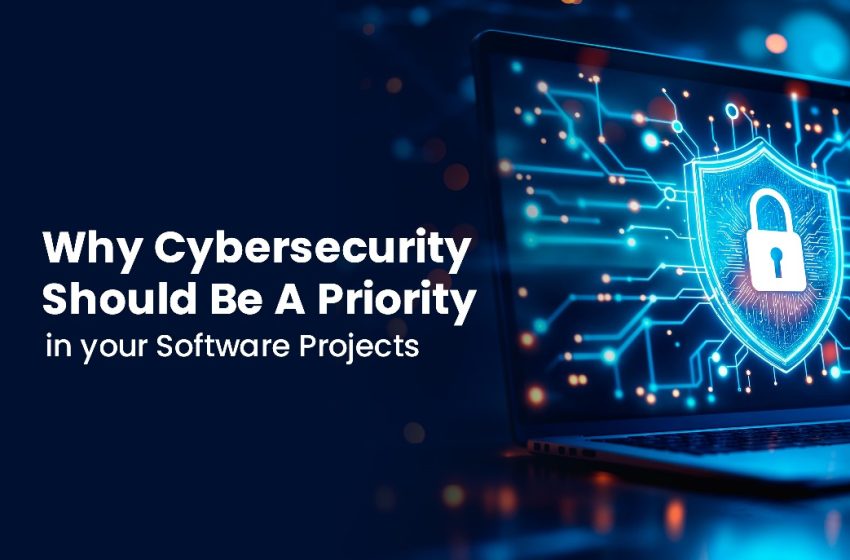Why Cybersecurity Should Be a Priority in Your Software Projects?
Secure Code, Stronger Business: A Smart Move for Sustainable Growth
Let’s Unpack Why Security Isn’t Optional in Today’s Digital World
In today’s fast-moving digital economy, software is the backbone of almost every business operation. From customer relationship management to online transactions, software touches every part of our professional lives. However, while most teams focus on speed, design, and functionality, one critical element is often overlooked: cybersecurity.
Sounds technical? It doesn’t have to be. Cybersecurity in development involves creating software that’s not only intelligent and user-friendly but also secure, safe, and trustworthy.
So, whether you’re a startup founder, a business decision-maker, or a growing tech firm, understanding why software security matters can make the difference between scaling confidently—and dealing with setbacks that hurt both trust and revenue.
Following are the reasons why making cyber security a priority isn’t just smart but it’s essential:
The True Cost of Skipping Security
Security isn’t just a technical layer. Instead, it’s part of your product’s value. When neglected, even the most innovative software can face major setbacks. Lacking proper protection, businesses may spend more time and money resolving issues than investing in growth. Data breaches can lead to legal challenges, distrust, and delayed progress. In the long run, skipping security doesn’t save time; it creates unexpected roadblocks that could’ve been prevented with a proactive approach.
The impact?
- Loss of trust
- Legal issues due to non-compliance
- Huge financial penalties
- Interrupted operations and damaged reputation
This isn’t to alarm—it’s the reality. From startups to global giants, data breaches are rising, and most could’ve been avoided by prioritizing cybersecurity from the start.
Build Security into the Foundation — Not as a Patch
Many teams think of security as something to “add later.” However, retrofitting software with security measures is expensive, complicated, and never as effective. The more innovative (and more budget-friendly) way is to embed security into every stage of software development.
This approach is called “Secure by Design”—and it’s becoming the gold standard for modern tech solutions.
Here’s why:
- It prevents security flaws before they appear
- It reduces the cost of fixing post-launch issues
- It helps you stay compliant with international data laws
- It shows your users that their privacy is your priority
In short, it transforms software into a trustworthy tool rather than a potential liability.
What Does a Secure Software Project Look Like?
You don’t need to be a tech expert to understand the basics of cybersecurity practices. Whether you’re working with an in-house team or an external partner, the following are the key principles to look for:
1. Make Data Safety a Habit
Personal information, such as email IDs, passwords, or payment details, should always be kept safe and secure. This means using tools like encryption so that even if someone tries to steal the data, it’s unreadable. It’s not just about avoiding trouble—it shows users that you genuinely care about their privacy and safety.
2. Secure Access Handling
Not every team member should have access to all the information.
It’s better to give access only to the tools or data needed for their specific work. This keeps things organized, avoids mistakes, and helps protect your system from both accidental errors and unauthorized access.
3. Keep Checking for Weak Spots
Just like you go for regular check-ups to stay healthy, your software needs regular testing, too. These checks help you spot problems early—before anyone else can find and misuse them. It’s an easy step that can save you from bigger headaches later.
4. Secure Code Practices
Your development team should follow coding standards that eliminate known security flaws—like SQL injection, cross-site scripting, and others.
Why Cybersecurity is a Growth Strategy, Not a Barrier
A common myth in the business world is that security slows down development or adds unnecessary costs. But the truth is quite the opposite.
Secure software builds faster, lasts longer, and scales smoother.
Here’s how strong cybersecurity in development can be your competitive edge:
- You become more trustworthy in the eyes of customers
- You avoid future repair costs and downtime
- You stay compliant with global data regulations (vital if you operate internationally)
Today’s users are more conscious than ever. They’re quick to uninstall or stop using apps that don’t feel secure. Offering strong data protection isn’t a bonus anymore—it’s expected.
Security-Focused Software Isn’t a Luxury—It’s the New Standard
With cyberattacks getting more sophisticated every year, waiting until “later” to prioritize security is no longer an option. Whether you’re building an e-commerce platform, a healthcare app, or a SaaS tool, software security should be part of your plan from day one.
Where Innovation Meets Security – The Dynfolics Way
At Dynfolics, we believe that great software isn’t just about how it looks or performs—it’s about how secure and future-ready it is. That’s why we build every solution with cybersecurity woven into the development process, ensuring that our clients can grow confidently without compromise.
When you choose Dynfolics, you’re not just choosing custom software. You’re choosing secure tech solutions that stand the test of time.
Let’s build something powerful—and protected.





